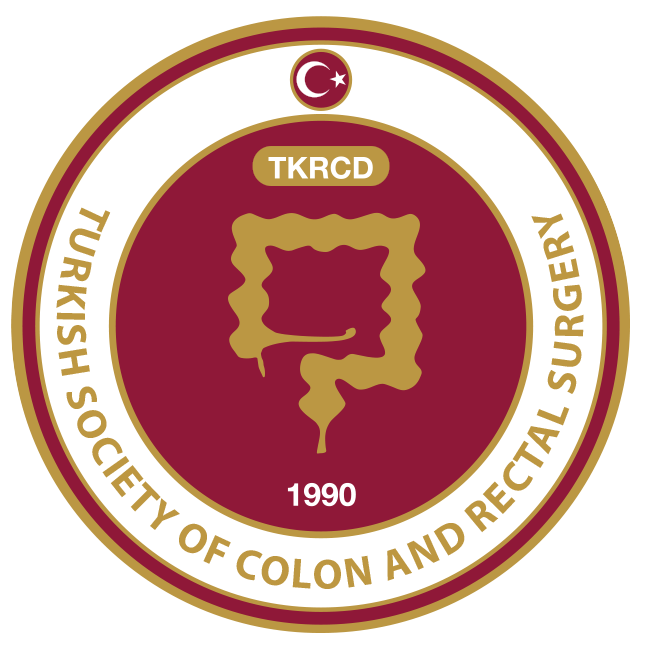ABSTRACT
Simultaneous laparoscopic procedures are now becoming more common, because of advances in laparoscopic surgery and greater laparoscopy experience for some clinicians. In this article, we present simultaneous laparoscopic sigmoidectomy and laparoscopic left partial nephrectomy in a 64-year-old female patient with sigmoid colon tumor and left renal angiomyolipoma.
Introduction
Simultaneous laparoscopic procedures are now becoming more common, because of advances in laparoscopic surgery and greater laparoscopy experience for some clinicians.1,2 Although simultaneous procedures have been reported to prolong the operation time and anesthesia time and cause excessive blood loss, they also have the advantages of effective use of limited healthcare resources, reduced hospital stay, reduced postoperative pain, early return to work and good cosmetic results.3,4
Renal angiomyolipoma (AML) is a benign neoplasm arising from mesenchymal elements. AML was first reported in 1951. AML is also called a “hamartoma” because of its varying composition, including adipose tissue, smooth muscle, and blood vessels.5 Most AMLs are detected incidentally. Hemorrhage (50-60%) is most common in AML larger than 4 cm. Hemorrhagic shock can be seen in approximately 30% of patients who develop hemorrhage. In addition, although most AMLs are benign, a small proportion of them can show aggressive character.5 Symptomatic lesions smaller than 4 cm are followed up, while those that are symptomatic are treated with embolization or conservative surgery after angiography. While asymptomatic AMLs larger than 4 cm are followed up radiologically, angiography and selective arterial embolization, enucleation or partial nephrectomy treatments can be applied in symptomatic patients.
Jacobs et al.6 reported the first laparoscopic colectomy in the early 1990s. Compared to open surgery, laparoscopic colorectal surgery has some potential advantages.6
The aim of this case report is to describe a patient with sigmoid colon carcinoma and concurrent left kidney AML, in whom successful simultaneous laparoscopic left hemicolectomy and left partial nephrectomy was performed.
Discussion
Colorectal cancer is one of the most common cancers in the world, and laparoscopic colectomy has been performed since 1991.2 Advances in minimally invasive surgery have now made it possible to safely perform several simultaneous surgical procedures. The benefits of minimally invasive surgery have also been extended to performing combined procedures for two different pathologies, concurrently simultaneously. This not only provides the benefits of minimally invasive surgery, but also provides benefits such as allowing the surgeon to perform simultaneous surgical procedures on two different accompanying pathologies, a single hospital stay, exposure to a single pre-anaesthetic evaluation, and a single anesthesia procedure for the patient.1,2 There are numerous reports of simultaneous operations, such as laparoscopic splenectomy, bariatric surgery, and hernia surgery performed during laparoscopic cholecystectomy, and urological operations such as laparoscopic simultaneous nephrectomy bilateral adrenalectomy, ureteropelvic stenosis and hernia repair being performed during laparoscopic cholecystectomy.3,7
Although the increasing use of cross-sectional imaging has increased the incidence of incidentally encountered AMLs, renal AMLs may cause spontaneous bleeding in 15% and hemorrhagic shock in up to 10% of patients. Preservation of kidney function is important in patients with renal AML. Therefore, nephron-sparing surgery should be considered. A multidisciplinary meeting was held with general surgery, urology, radiology and medical oncology to plan the operation in the preoperative period, since our patient would have to undergo mandatory surgery due to a sigmoid colon tumor and the risk of bleeding was increased due to the fact that the patient would be operated in the left retroperitoneum. As a result of the council, simultaneous surgery was decided.
In conclusion, this report has shown that simultaneous laparoscopic left hemicolectomy and left partial nephrectomy is a feasible procedure in selected patients with sigmoid colon carcinoma and concurrent left kidney AML in centers with appropriate laparoscopic surgery experience.



